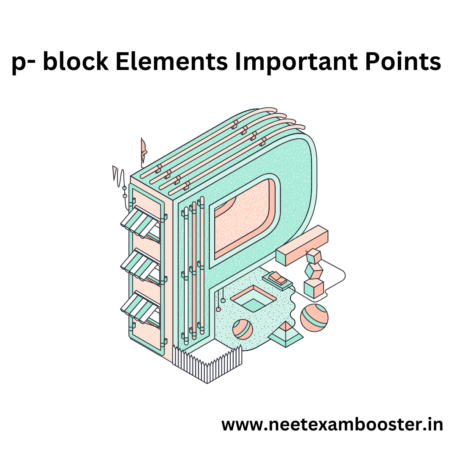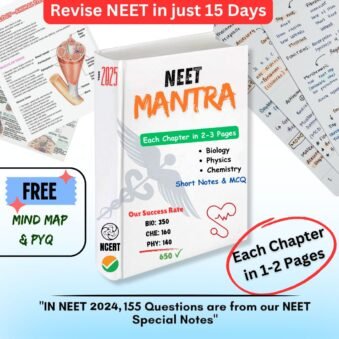p- block elements important points
p- block elements important points : The p-block elements are located in the groups 13 to 18 of the periodic table and have their outermost electrons in the p-orbital. They exhibit a wide range of chemical properties due to availability of valence electrons.
The electronic configuration of p-block elements is given as ns2np1-6. The physical and the chemical properties of these elements vary across the period and down the group.
Boron is a metalloid, carbon can form a wide range of different compounds, nitrogen is essential for life, and the noble gases are chemically inert.
p- block elements important points, p- block elements important points, p- block elements important points, p- block elements important points, p- block elements important points, p- block elements important points, p- block elements important points, p- block elements important points

NCERT Chemistry Class 11 Chapter 11- p- block elements important points 25 Important Points
There are 25 important points on p- block elements –
- The p-block elements are those elements in periodic table whose outermost electrons are in the p-orbital.
- The p-block elements includes the elements in groups 13 to 18 of the periodic table.
- Group 13 elements includes- boron (B), aluminum (Al), gallium (Ga), indium (In), and thallium (Tl).
- Group 14 elements includes – carbon (C), silicon (Si), germanium (Ge), tin (Sn), and lead (Pb).
- Group 15 elements includes- nitrogen (N), phosphorus (P), arsenic (As), antimony (Sb), and bismuth (Bi).
- Group 16 elements includes- oxygen (O), sulfur (S), selenium (Se), tellurium (Te), and polonium (Po).
7..Group 17 elements are known as the halogens and include fluorine (F), chlorine (Cl), bromine (Br), iodine (I), and astatine (At).
- Group 18 elements are known as the noble gases and include helium (He), neon (Ne), argon (Ar), krypton (Kr), xenon (Xe), and radon (Rn).
9..The p-block elements shows a wide range of chemical properties due to availability of valence electrons.
- The electronic configuration of the p-block elements is ns2np1-6.
- Group 13 elements have the three valence electrons and tend to lose them to form a +3 oxidation state.
- Group 14 elements have the four valence electrons and can form covalent or ionic compounds.
- Group 15 elements have the five valence electrons and tend to gain three electrons to form a -3 oxidation state.
- Group 16 elements have the six valence electrons and can gain two electrons to form a -2 oxidation state or form covalent compounds.
- Group 17 elements have the seven valence electrons and tend to gain one electron to form a -1 oxidation state.
- Group 18 elements have the eight valence electrons and are chemically inert due to the stable octet configuration.
- The atomic radii of the p-block elements increase down the group due to an increase in the number of shells.
- The ionization energies of the p-block elements increase across the period due to an increase in the effective nuclear charge.
- The electronegativity of the p-block elements generally increases across the period and decreases down the group.
- The melting and boiling points of the p-block elements generally increase down the group.
- The metallic character of the p-block elements generally decreases across the period and increases down the group.
- Boron is a metalloid which exhibits both metallic and non-metallic properties.
- Carbon can form a wide range of compounds due to its ability to form a strong covalent bond.
- Nitrogen is an essential element for the life and is a major component of the Earth’s atmosphere.
- The noble gases are chemically inert and have low boiling points, making them useful in the applications such as lighting and refrigeration.
Some Important Questions From Biology Class 11
| Chapter Name | Quiz Link |
| The Living World | Play Now |
| Biological Classification | Play Now |
| Plant Kingdom | Play Now |
| Animal Kingdom | Play Now |
| Morphology of flowering plants | Play Now |
| Anatomy of flowering plants | Play Now |
| Cell: the unit of life | Play Now |
| Biomolecules | Play Now |
| Cell Cycle and cell division | Play Now |
| Transport in Plants | Play Now |
| Structural organisation in Animals | Play Now |
| Mineral nutrition | Play Now |
| Photosynthesis in higher plants | Play Now |
| Respiration in plants | Play Now |
| Plant Growth and development | Play Now |
| Digestion and Absorption | Play Now |
| Breathing and Exchange of Gases | Play Now |
| Body fluids and circulation | Play Now |
| Excretory products and their elimination | Play Now |
| Locomotion and Movement | Play Now |
| Neural Control and Coordination | Play Now |
| Chemical Coordination and Integration | Play Now |
Some Important Questions From Biology Class 12
| Chapter Name | Quiz Link |
| Reproduction in organism | Play Now |
| Sexual reproduction in flowering plant | Play Now |
| Human reproduction | Play Now |
| Reproductive health | Play Now |
| Principles of inheritance and variation | Play Now |
| Molecular basis of inheritance | Play Now |
| Evolution | Play Now |
| Human health and disease | Play Now |
| Strategies for enhancement in food product | Play Now |
| Microbes in human welfare | Play Now |
| Biotechnology principles and processes | Play Now |
| Biotechnology and its application | Play Now |
| Organism and population | Play Now |
| Ecosystem | Play Now |
| Biodiversity and its conservation | Play Now |
| Environment issue | Play Now |





 155 out of 200 questions were directly asked from these notes in NEET 2024
155 out of 200 questions were directly asked from these notes in NEET 2024

Pingback: Chemistry Important Points For NEET Class 11 - NCERT